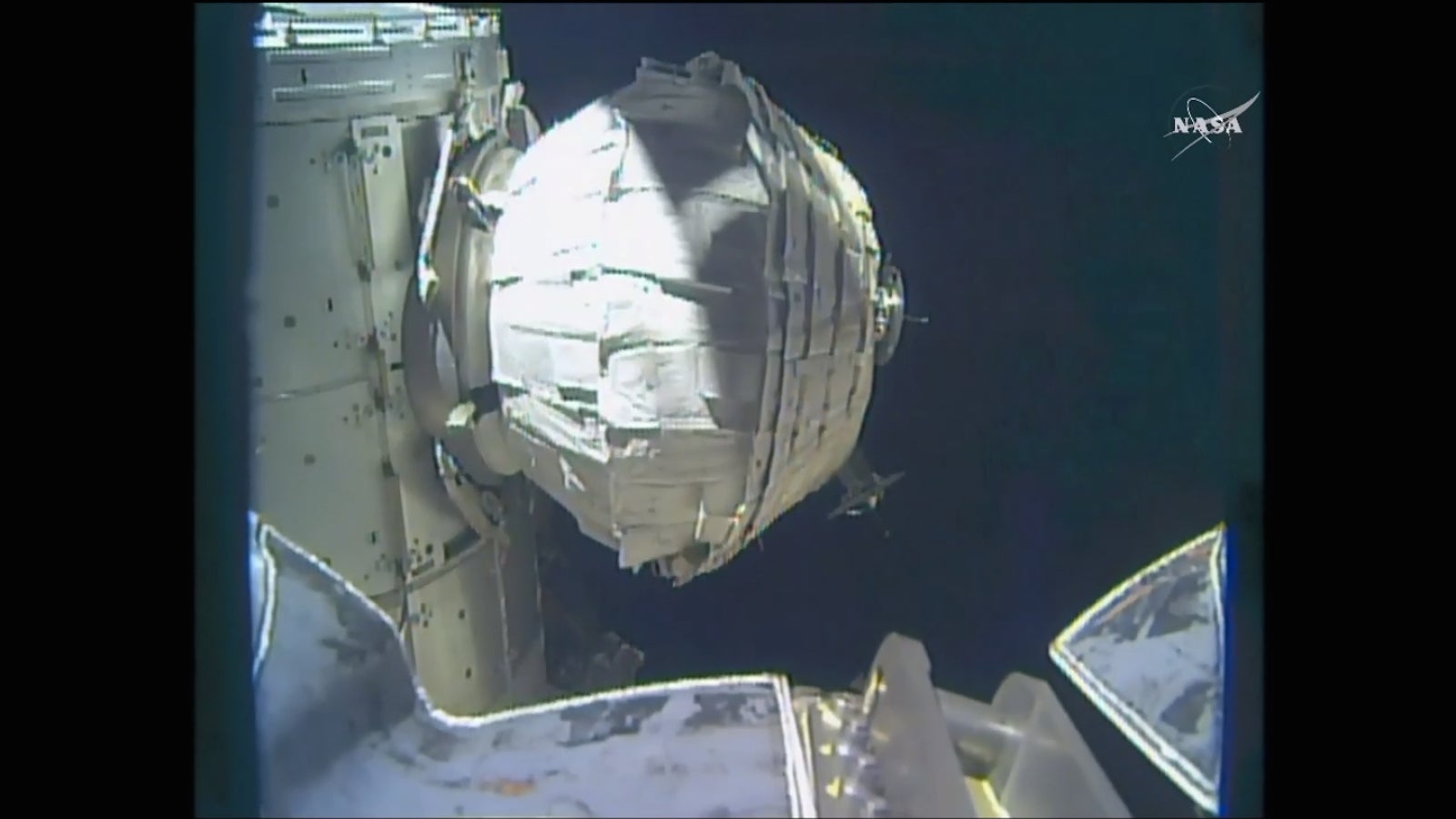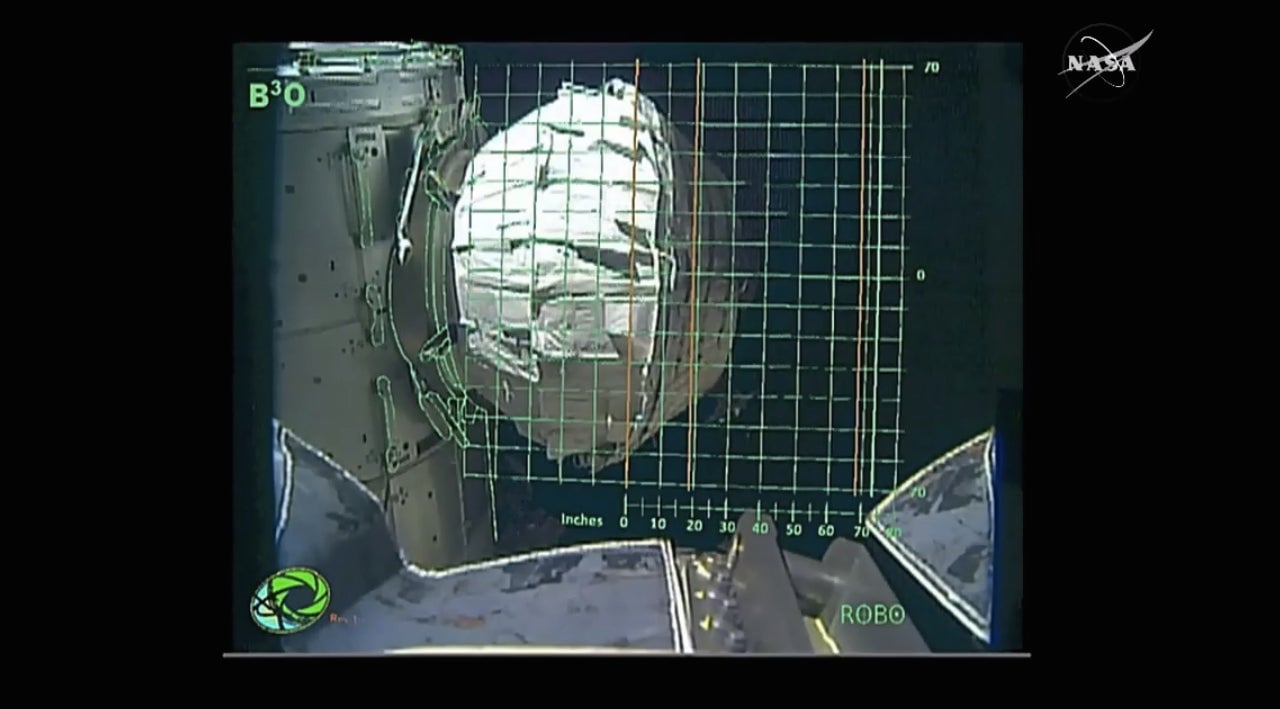NASA is trying to inflate an expandable habitat in space
NASA is trying to inflate an experimental habitat attached to the International Space Station, which could offer explorers more living space for less launch mass.


NASA is trying to inflate an experimental habitat attached to the International Space Station, which could offer explorers more living space for less launch mass.
On Saturday (May 28), astronaut Jeff Williams began gradually pumping air into an inflatable habitat called the Bigelow Expandable Activity Module, or BEAM, with support from mission control on the ground in Houston, Texas.
At the time of this writing, he had released 13 seconds-long pulses of air from the station into BEAM, totaling 54 seconds, over the course of nearly four hours starting at around 8:00am CST (9:00am EST). You can watch a live stream of the effort here, on NASA’s Ustream feed.
The module grew in length by 34 inches, from 6 inches, in that time. The goal is to reach the 68 inches needed to pressurize and expand the rest of the way.

BEAM was about 7 feet long and 8 feet wide when it arrived at the space station last month, Space.com reported. When fully inflated, it will be about 13 feet long and 10.5 feet wide.
This is NASA’s second attempt at pumping up BEAM. The first try was halted on Thursday, because the module wasn’t inflating properly after having sat in its compressed state for 10 months longer than originally planned due to launch delays.
Today’s attempt has gone smoother so far, albeit very slowly. The expandable habitat is the first certified for human habitation to be flown into space. NASA is being understandable cautious about inflating it, so as to protect those onboard the space station. About a week after inflation, the crew will likely attempt to enter it.
BEAM is reportedly expected to orbit in space for the next two years in order to test how well expandable habitats hold up against conditions like solar radiation, temperature extremes, and micrometeorite strikes.